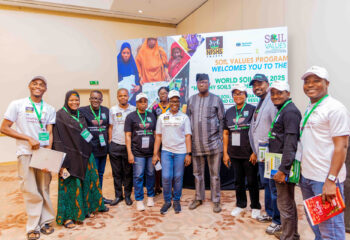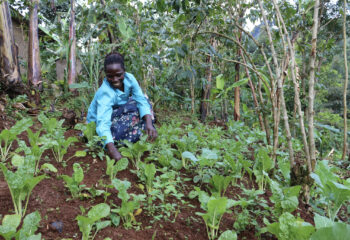
This is the second installment of a two-part blog series in which our very own Africa Food Prize winner and microdosing pioneer, Dr. André Bationo, discusses the benefits of microdosing for smallholder farmers, sustainability, and soil fertility in Africa. If you haven’t already, read Microdosing for Soil Health, Nutrition, and Food Systems in Africa: Part One first.
1. Microdosing and Soil Health
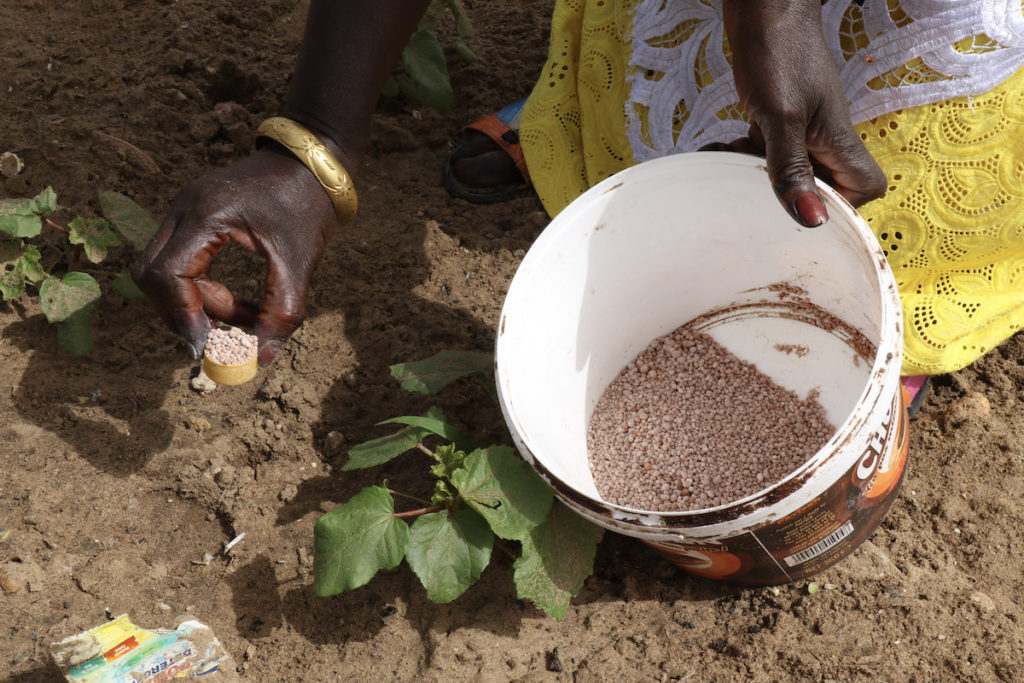
Microdosing, the placement of small quantities of appropriate fertilizer during planting, is an entry point to the integrated soil fertility management (ISFM) framework. ISFM practices include the use of mineral fertilizers, organic inputs, improved germplasm, and local adaptation. Such practices maximize the agronomic use efficiency of applied nutrients and improve crop productivity. Widespread adoption of ISFM is crucial in harnessing healthy soils, because inorganic fertilizer provides most of the necessary nutrients and organic fertilizer improves the soil’s organic matter status, structure, and buffering capacity. Moreover, the use of both inorganic and organic fertilizers is proven to result in a synergy that improves the efficiency of both nutrient and water use.

Although microdosing technology can result in a significant increase in yields, it is important to make sure that the soil is not being mined of nutrients, which would make this technology unsustainable in the long term. It is also important to combine this technology with other measures not only to ensure the sustainability of the system, but also to increase the profitability for small-scale farmers in the drylands of Africa. Therefore, the technology has been used alongside the basal application of phosphate rock, which is available in most of the countries. Several studies have shown the importance of maintaining soil carbon in the Sahelian agroecosystem. Studies have also demonstrated the importance of rotating cereal crops with nitrogen (N)-fixing crops, such as cowpea and groundnut, in the Sahel.
Table 1 shows millet’s response to microdosing alone and microdosing in combination with soil amendments of phosphate rock, phosphate rock plus farmyard manure, phosphate rock and crop residue, and phosphate rock after rotating with an N-fixing cowpea crop.
| Treatment | Grain Yield (kg/ha) | Grain Yield Increase over Control (%) | Total Dry Matter Yield (kg/ha) | Total Dry Matter Yield Increase Over Control (%) |
|---|---|---|---|---|
| Control | 589 | 2,213 | ||
| Microdosing | 920 | 56 | 3,356 | 52 |
| Microdosing + phosphate rock (PR) | 1,162 | 97 | 3,640 | 64 |
| Microdosing + PR + manure | 1,417 | 140 | 4,213 | 90 |
| Microdosing + PR + crop residue | 1,413 | 140 | 3,885 | 76 |
| Microdosing + PR after an N-fixing cowpea crop | 1,311 | 122 | 4,615 | 108 |
Table 1. Pearl millet response to microdosing plus other soil fertility enhancement technologies
Microdosing fertilization: 4 kg P/ha; phosphate rock: 13 kg P/ha; manure: 2 mt/ha of farmyard manure; crop residue: 2 mt/ha of millet residue.
The application of microdosing alone increased millet yield by 56% over the control, but when phosphate rock was added, yield increased by 97% over the control. Millet grain yield increased 140% over the control when crop residue or manure was added. Crop residue increases biomass at the farm level in the drylands of the Sahel, which protects soil from erosion caused by strong windstorms. The application of microdosing along with phosphate rock in a rotation system with cowpea more than doubled the total biomass of pearl millet. This will drastically increase the availability of crop residue for mulching, which competes with cooking, animal feed, and home building for its use.
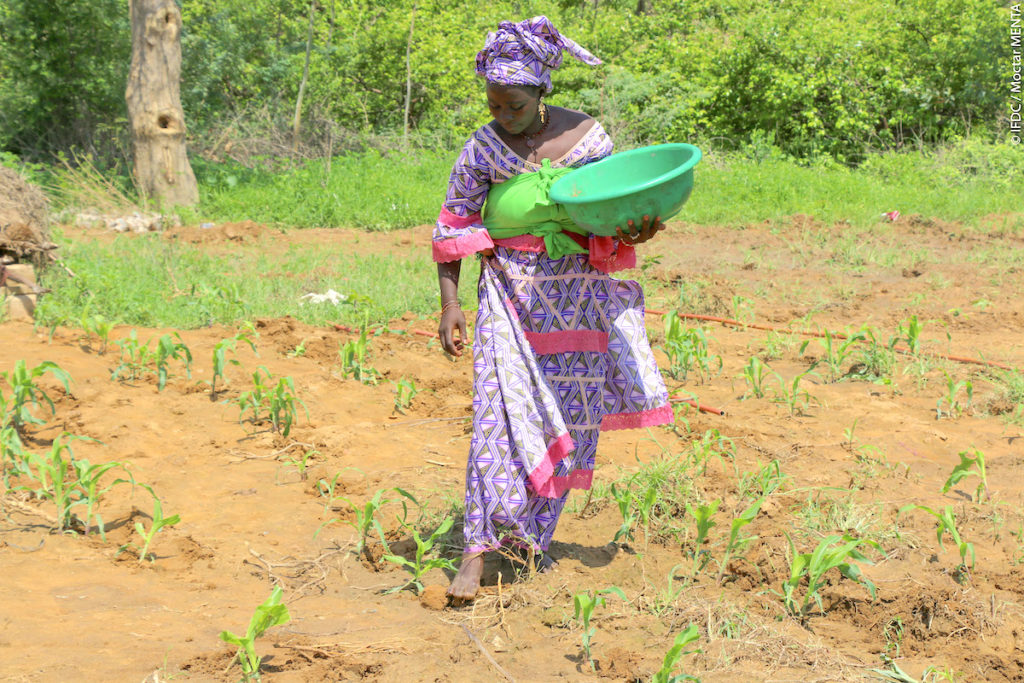
2. Microdosing and Climate Change
In the Sudan-Sahelian areas with more than 300 millimeters (mm) of annual precipitation, crop production is more limited by nutrients, specifically P and N, than by water or adverse biophysical conditions. The dominant effect of nutrient limitation over water is such that vegetation only uses 10-15% of the average rainfall. The rest is lost through evaporation, runoff, and leaching. The breakdown of these systems requires an alternative as the population continues to grow. In these drought-prone Sahelian countries, climate change mitigation will include the use of technologies such as microdosing.
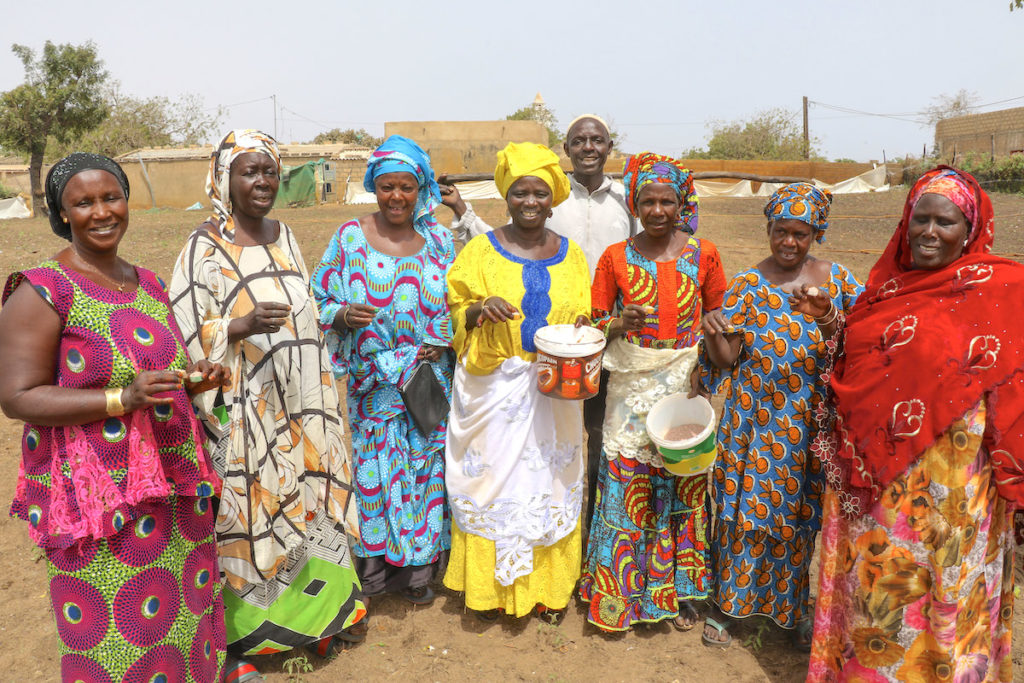
In Sadore, where the average annual rainfall is 560 mm, a lack of fertilizer use resulted in a harvest of 1.24 kg of pearl millet grain per millimeter of rainfall; however, the use of fertilizers produced a harvest of 4.14 kg of millet grain per millimeter of rainfall (Table 2). This clearly demonstrates that the use of external inputs, such as fertilizers, drastically increases water use efficiency.
| Treatment | WU in Sadore (mm) | Y in Sadore (kg/ha) | WUE in Sadore | WU in Dosso (mm) | Y in Dosso (kg/ha) | WUE in Dosso |
|---|---|---|---|---|---|---|
| Fertilizer | 382 | 1,570 | 4.14 | 400 | 1,700 | 4.25 |
| No fertilizer | 373 | 460 | 1.24 | 381 | 780 | 20.4 |
Table 2. Water use (WU), grain yield (Y), and water use efficiency (WUE) for millet at Sadore and Dosso (Niger).
The intensification of crop production requires an integration of soil, water, and nutrient management that is locally acceptable and beneficial for smallholder farmers. In the Central Plateau of Burkina Faso, stone bounds, or “cordons pierreux” (CP), and Zai are two techniques commonly used for water harvesting. Scientists found that water harvesting alone with stone bounds did not improve yield, but the combination of water harvesting with stone bounds or Zai plus manure more than doubled sorghum yield compared to the control (Table 3).
| Treatment | Grain Yield (kg/ha) |
|---|---|
| Control | 331 |
| Stone bounds | 397 |
| CP + manure | 789 |
| Zai + manure | 805 |
Table 3. Average yield of sorghum over four years in response to water harvesting and manure application (kg/ha)
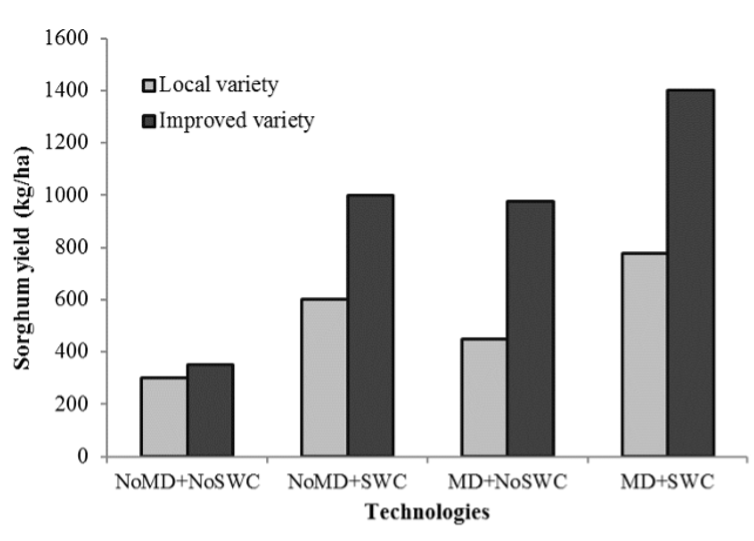
Figure 1. Response of sorghum to microdosing (MD) in combination with soil and water conservation (SWC) techniques
This clearly shows that water harvesting will not work on its own, but there is a need to combine it with the improvement of soil fertility. Fertilizer is commonly thought to increase the risks of dryland farming, but in some situations, it may be risk-neutral or even risk-reducing. Phosphorus, for example, causes crops to grow hardier and mature earlier, reducing damage from and exposure to drought. Many development projects have invested billions of dollars in soil and water conservation; however, most failed to include an element of soil fertility improvement, and thus the harvested water cannot fulfill its potential for productivity improvement. It is well known that fertilizers are key to improved water use efficiency, as water harvesting can help improve fertilizer use efficiency.
The microdosing technique was disseminated in the North-Sudanian zone of Burkina Faso for three years using various extension tools. Soil and water conservation techniques were also practiced alongside microdosing. Microdose fertilizer application to local and improved seed varieties resulted in significant increases in sorghum grain yields of 100% and 186%, respectively, compared to the control (Figure 1). When microdosing was combined with soil and water conservation techniques, yields of local and improved varieties increased even more at 158% and 300%, respectively, compared to the control. The yield obtained with the soil and water conservation techniques alone was higher than that of the control, but lower than that with microdosing alone.
Conclusion
Microdosing is not only an innovative approach to fertilizer application, but it is a proven technique to address issues of soil health. Microdosing represents a widely scalable approach that is affordable and money-saving for farmers and beneficial to increasing productivity on arable land in Africa.

